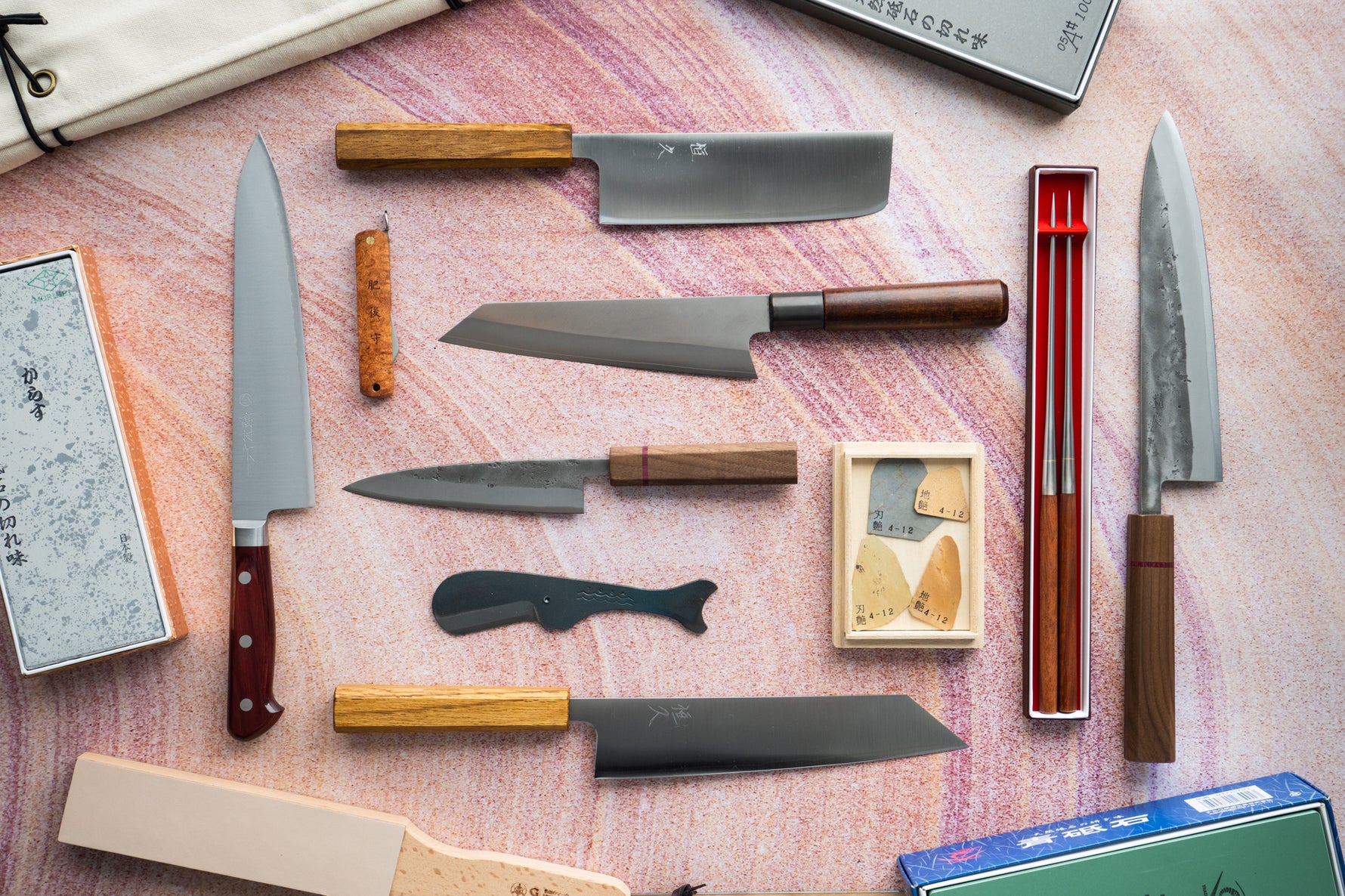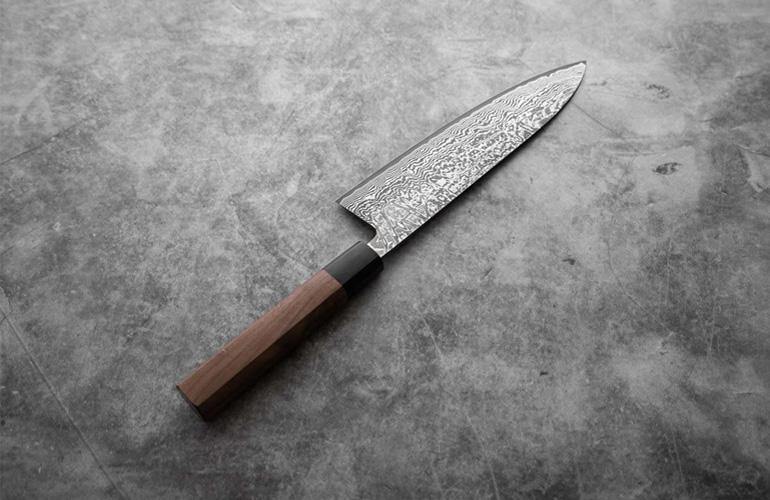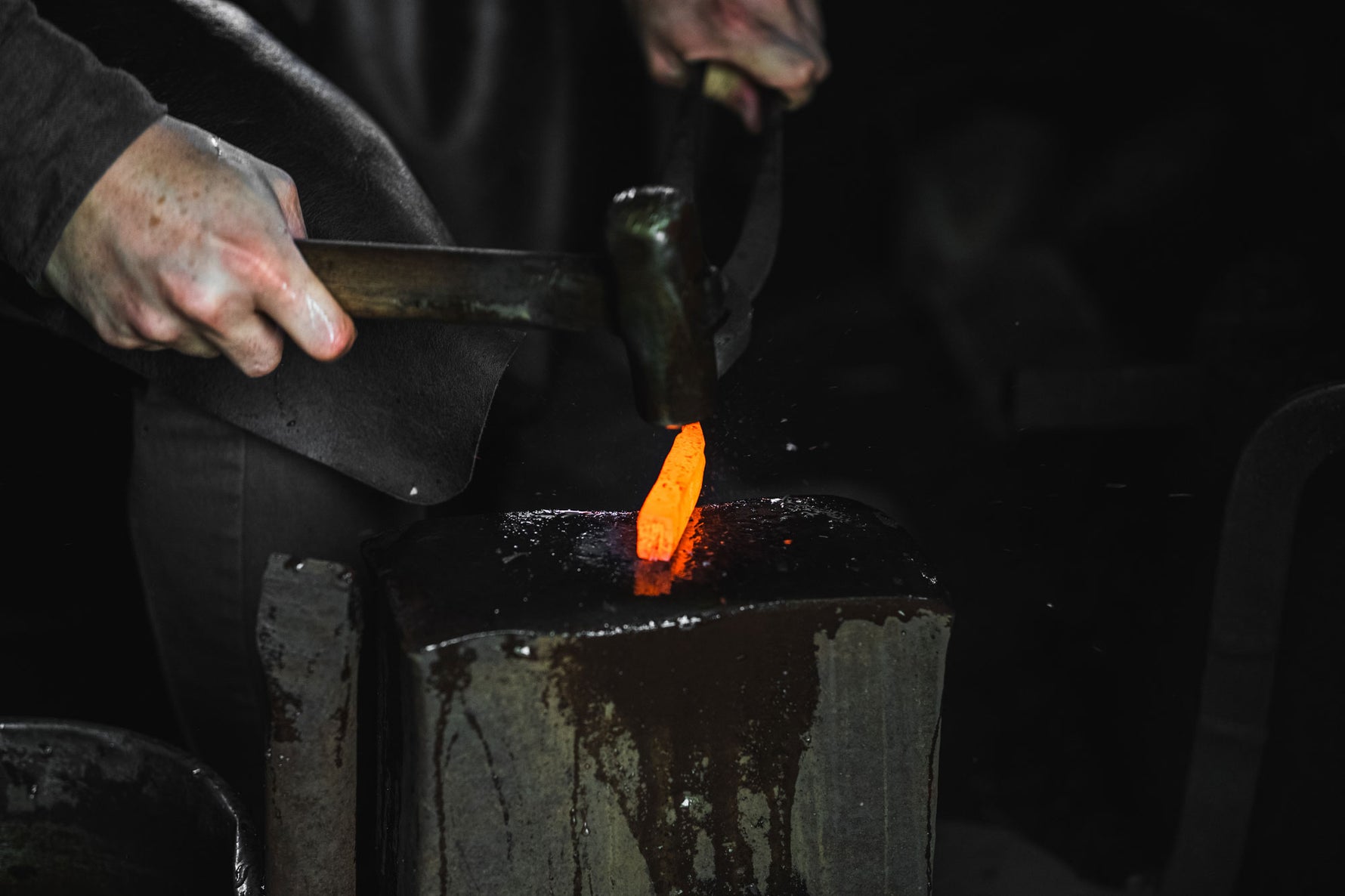Knife Information

Gifting A Japanese Knife - Making the right choice
Which Japanese knife makes the best gift?
Whether it’s a special birthday or an anniversary gift, a fine Japanese knife is a cut above and will be sure to impress. For that person in your life who is an aspiring foodie, loves cooking or would like to take their skills to the next level, a Japanese knife makes an excellent gift for the person who has everything. With everyone spending more time at home, it’s time to take those cooking talents to the next level, and with our range of knives available in Australia, it’s never been easier to find the perfect gift. If you’re new to Japanese knives, a few easy questions can help you decide the perfect gift. The best way to consider what knife suits best is to think about how the lucky recipient will be using it.
For the barbeque lover - Sujihiki
Does your partner love to show off their skills with the American roaster or Tomahawk steaks? Do they like to roll out slabs of beef and flash their knife in the air as they prepare for a hungry crowd? Is there a touch of the theatre in the way they wield their blade? Consider the Okeya Ginsun Sujihiki. This beautiful blade is handcrafted by a father and son team in Miki City Hyogo and features a long blade made with Ginsan, a high carbon stainless steel. With all the benefits of a Carbon Steel without the extra maintenance or worry about rust. The understated elegance of the handle is enhanced by the fine Kanji etched on the blade. It’s a serious blade and it’s seriously lovely to look at.
For the everyday go-to knife – Santoku
For someone that loves to cook but mainly sticks to smaller meat and veg, the Santoku is the perfect introduction to Japanese knives. Try the Tadafusa Seido Santoku. Based on a carbon steel cutting edge but clad in stainless up the side of the blade, it’s easier to maintain than some other carbon steel knives due to the stainless cladding. In a sleek black box, this Octagon handled piece with a Nashiji or “Pear Skin” style finish is a looker and sure to impress.
For the fisherman – Deba
The fish markets are their happy place – they love to wander comparing the different offerings and choosing just the right cuts to create their masterpieces. Whether they’re trying to impress you or a whole crowd of friends, they like to delight with their skills and mastery. The best option here is the Deba knife – perfect for fish filleting. With a single edged blade, it is a specialty knife for filleting and removing the heads from fish, rather than general purpose cutting. Try the Ishikawa Blue 2 Deba 180 MM. The maker of this knife puts his emphasis on performance, not appearance, but you wouldn’t know this from looking at this spectacular understated blade. Sometimes a whisper says more than a shout.
For the allrounder – Bunka
They watch MasterChef and Iron Chef and call out the contestants for bad technique. They are most happy taking on food challenges in their own home. They believe you should only have one kitchen knife…and that knife should be an amazing allrounder. Buy them the Kanjo HAP40 Bunka and watch them clap their hands with glee at the stunning polished blade with dimple hammer-marks from the blacksmith, and a lightweight, waterproof handle made from timber and resin.
For the faster vegetable chopper in the house – Nakiri
Just because you’re chopping vegetables or whipping up a vegan feast doesn’t mean you can’t have superior performance and a blade to match. They love to show off their knife skills with a “who me? I’m just here cutting up veggies” flourish, as they whirl the whole produce section of their cutting board into a wok. One great suggestion is the Shiro Kamo Shirogami 2 Damascus Nakiri. This is a pure carbon steel knife, and is recommended for those that love their chef knives and don’t mind the extra maintenance. Shirogami is a pure carbon steel with no stainless elements, so be sure to keep that blade dry immediately after use and watch that beautiful blue and purple patina develop on the blade. Featuring the stylish octagonal blade in sexy black walnut, and a delightfully thin grind, the aspiring chef will enjoy slicing and dicing like they’re demonstrating on a cooking show. Why should the meat-eaters be the only ones to get the great knives?
Buy your loved one a Japanese knife today
So there you have it, some great ideas for a special someone who richly deserves it. The best part of giving a knife is that each of these Japanese knives has a rich history and culture that goes with them and will become heirlooms over time. They are truly a gift that will get a lot of use and will stand the test of time. Of course, you don’t have to give them away – you could always find one for yourself on this list. Order today from Chefs Edge.

Carbon Steel v Stainless Steel. What's Better?
Often a common question among newcomers to Japanese knives is the decision to make between carbon and stainless steel. Which should you choose? There are a few points to consider when making your choice.
The most commonly used Japanese Carbon steels are Aogami (Blue), Shirogami (White). The most commonly used Japanese Stainless steels are VG10, Ginsan, AUS8. The hybrid powder stainless steels with the best of both worlds are SG2/R2, ZDP189, HAP40.
1) Maintenance
This is the key difference between carbon and stainless knives. Carbon steel knives require higher maintenance than stainless steel knives, as they lack chromium content which gives stainless knives their corrosion resistant properties. By definition, a stainless steel is a steel than contain more than 10.5% of chromium.
If you cut produce and leave a carbon steel knife wet on the cutting board, expect rust spots to appear within a matter of minutes. This is not the case for stainless steel. Some carbon steels like Shirogami (White) steel for example, will develop rust quicker than Aogami (Blue) steel, even though they are both carbon steels. This is due to the high purity of Shirogami, and the added elements in Aogami.
As a result of this lack of chromium (which make stainless steel stainless), these knives will also develop what’s called a patina, or a discolouring of the blade due to oxidizing of the steel. This is completely normal, and will produce blueish, purple hues across your blade that cannot be removed short of polishing the blade. Further reading about the patina can be found here.
Once this patina is fully developed, which may take several weeks of use, this will act as a protective barrier from elements which may rust your blade. It is good insurance against leaving your blade wet for a few minutes on the board.
2) Edge retention
On the whole, you will find that carbon steel will retain an edge longer than most stainless steels. Carbon steel has a finer grain structure, and as a result of being forged, the steel will hold an edge for longer than a softer stainless steel.
However, there are exceptions to this point. There exists stainless steels that have more carbon than carbon steel knives, that are also fully stainless. These are referred to as powdered stainless steels, and SG2/R2, ZDP189, and HAP40 are the most prominent of these steels used in knifemaking. These are widely considered to have the best of both worlds, with fantastic edge retention and stainless properties.
3) Ease of sharpening
From our experience, carbon steels will sharpen up easier, faster, and to higher levels than most stainless steels. Shirogami, being the purest carbon steel, will sharpen to a scalpel like edge with ease. Aogami is very similar to sharpen, but will require a small amount of extra effort to reach similar results.
Softer stainless steels like VG10 and AUS8 can be trickier to sharpen than carbon steels, but this also depends on the quality of the heat-treatment of the steel.
The harder powder stainless steels can be the most difficult to sharpen. Due to their high hardness, it is recommended these are sharpened with at least a 500 grit stone to speed up the initial burr forming process.
4) Price
The final point to consider when choosing a carbon or stainless steel japanese knife is the price difference. This price difference will be mainly due to the amount of time required to finish a particular piece, as well as the materials used.
Knives using Shirogami and Aogami carbon steels can be found relatively cheaply, $80-$150) if the process to finish these knives is not very time consuming. Obviously, some knives made using Shirogami or Aogami can be extremely expensive as the time required to finish these pieces to perfection is high.
VG10 is increasing in price and popularity, so it can be difficult to find good, authentic VG10 knives for less than the cost of carbon. Some seemingly reputable knife shops in Australia and the world will source knives made using Chinese “VG10” equivalent, or outright deceive you by saying the steel is from Japan when it is not, and sell these knives cheaply, passing them off as “Japanese”. Beware of these imitations.
The SG2 and powder stainless knives are generally more expensive than the rest of the other steels, starting at around $300 for the Takamura SG2 Gyuto and rising from there. These are often the best quality and value for money out of the stainless steels.
Conclusion
There are many factors that contribute to whether a knife will suit your requirements or not. If you don’t mind some extra care and maintenance, and would prefer to stick to a lower budget, then an entry level carbon steel knife will be your best choice.
If you’d rather spend the extra money and would rather a lower maintenance knife, SG2 or a powder stainless steel will be a great choice you will be sure to love. Just take care around cutting hard objects as to not chip the blade, and you’ll be enjoying your knife for many years.

Japanese Chef Knives - The Gyuto
When we talk about Japanese chef knives, the one you may be most familiar with is the Gyuto. Let’s dive into the origins and history of this tool, and the different ways you might use this world renowned chefs tool.
What Exactly Is It?
The Gyuto is the Japanese version of the western chef’s knife and is very versatile — it can be used for everything from chopping vegetables to slicing different kinds of meat.
Their length can range from between 18cm and 30cm, and usually have one long curve from heel to tip. This profile may vary slightly from region to region, as some blacksmiths prefer a taller Gyuto, some prefer a shorter height from heel to spine Regardless of the variations in profile, this slightly curved blade allows for many different styles of cutting.
The Origins And History
These blades emerged as a response to and inspired by western knives that Japan imported during the end of the 19th century, during the Meiji era.
The supply of these knives increased for two reasons after this period.
First, until this time Japan had sealed itself off from the world, meaning very little foreign culture and few foreign goods were allowed to enter Japan. When Japan began opening itself up, western-style chef’s knives flooded in along with European food culture. At this point, it became more common for people to start eating meat at dinner. The knife earned its name — Gyuto (literal translation meaning "cow sword") — because it was mainly used for cutting beef during the rise in meat-eating.
The second reason these knives were produced is because swords traditionally made by were no longer in great demand. While they still produced katanas and other weapons, blacksmiths turned to making kitchen knives as their rise in popularity proved to be an increasingly lucrative trade.
Using a Gyuto
Just like a western-style chef’s knife, it is ideal for a range of different tasks, and can be used a few different ways.
Rock-chopping: With a firm grip on the handle, begin your cut with the tip of the blade, and without lifting the knife off the board, contact the blade with the board all the way down to the heel, sliding the blade forward as you cut. Repeat this motion by lifting the heel of the blade in the air and rocking back and forth along the blade length.
Pull-cutting: Start with the heel of the blade the back of your produce, contact the blade to the board from heel to tip, slicing through your produce. Great technique for proteins.
Push-cutting: With the blade parallel to and off the cutting board, using the flatter part of the blade toward the heel, push down and forward at a 45 degree angle. Once pushed through your produce and contact with the board is made, pull up and back in the same direction and repeat.
The tip area, being nimble and small, makes it excellent for piercing tough meat and making fine cuts.
The blade length varies based on what you are likely to use it for. Shorter Gyuto are are more nimble but long blades give you more blade area for larger cuts of meat or vegetables.
Final Thoughts
Rich in culture and history, the Gyuto knife would be a great addition to any kitchen if you’re interested in upping your home-cooking game.
We consider it to be the first knife in your collection, as it can handle almost all manner of tasks. Opt for a 180mm-210mm if you prefer a smallish blade, or choose a 240mm blade if you prefer much longer knives for your tasks.

How to Make a Japanese Knife
Many people have a deep and entirely justifiable fascination with Japanese knives. Sharpness is part of the intrigue: learn more about the history of tameshigiri, if you want proof of the power of these blades.
There's also a fascinating background of how Japanese knives are made. A certain part of the forging process can only be performed after dark so that the blacksmith can better judge what color the metal is glowing — you've got to admit that's unique.
But aside from intrigue, people love the quality of these knives, thanks to how they're made. Here, we look at the process that Japanese knives are put through to obtain that incredible quality. Let's start with a breakdown of how they differ from Western knives.
What's the Difference Between Japanese Knives and Western Knives?
There are a few major differences between many Japanese knives and Western knives:
Single bevel (Japanese) vs. double bevel (Western): the single bevel means that a blade is better suited to one hand than the other and can hold a sharper edge for more delicate cuts
Harder, more brittle steel: Japanese knives tend to be made of harder steel. This is more brittle but holds an edge for longer if treated with respect.
Single-piece vs. composite handle: Western knives tend to have a handle made of two pieces of wood riveted together around the tang. In Japan, the tang is traditionally knocked into a single block of wood.
So, it's clear Western and Japanese knives are very different, but how are these blades made? There are numerous production modes, but we'll just look at two: the high-quality factory method and the mysterious, romantic hand-forged method.
How to Make a Japanese Knife in the Factory
Rest assured that this isn't your typical ‘factory-made’ knife. There may be a team of workers and machinery, but the care that goes into forging these knives is still exquisite. It starts, of course, with the metal.
Step 1: Initial Shaping
Blanks of metal are heated in a forge and then pounded out with a power hammer. The metal is then periodically quenched to give it strength. This process leads to the blades taking on their basic form and achieve uniform strength in all parts.
At the end of the shaping, the blades are treated on a sanding belt. The shape of the blades is controlled and carefully monitored by expert craftspeople. As mentioned, this isn't your typical factory.
Step 2: The Kiln
The knives are put into a kiln and then cooled at a controlled pace a day after the initial shaping. The heating and cooling changes the metal's molecular structure to something approaching the desired result — but not quite. There's more work to be done on day 3.
Step 3: The Finished Shape
As the knives aren't yet at the final hardness, the final stage is to make some cold adjustments. This is an intensive, meticulous process done by hand. The knives are given their desired shape and then put through the kiln one more time, which gives them the perfect hardness.
Step 4: Sharpening
Sharpening a knife is a specialized job. The blades are sent to experts who sharpen the blades to an unbelievably fine grade. Even here, the temperature is key: the wheels that sharpen the blades are kept cool with water, as raising the metal to high temperatures would compromise its quality.
The knives produced using this method are sharper and of better quality than what you'll find in many restaurants. Here's what you wanted, though: the handmade method.
How to Make a Japanese Knife by Hand
Step 1: The Furnace
Masters in forging Japanese knives also start by heating metal in a furnace. So far, so familiar. Just like a great chef knows when a steak is perfectly medium-rare by touch, a master blacksmith knows when the metal is hot enough by its color, as well as other signals that the untrained eye just won't notice.
The metal is shaped with an air hammer and the watchful eye of the blacksmith. Precision is the key to perfection here, and not a single blow is wasted.
Step 2: Cold Forging
‘Cold forging’ means that the metal is, well, almost cold. This makes it far harder to work with than hot metal but yields far superior results. If you don't know what you're doing, it's easy to damage the metal by cold forging.
The blacksmith cold forges the knife to make the metal stronger on a molecular level than if it was hot forged. This job is sometimes given to a master craftsman's apprentice, which can seem an odd term for someone who already understands metalworking better than most mortals.
Step 3: Quenching
The blade is heated and then quenched to bring it to a desired level of hardness. Such is the need for perfection that it's important to use the right fuel for the furnace.
Coal, for example, contains a lot of impurities that make it unsuitable for this refined process. Think of your dad's bourbon-soaked hickory wood chips for his beloved barbecue, but on a whole different level.
The blacksmith knows instinctively what color the metal's glow has to be. This is why quenching only takes place after dark.
Step 4: Tempering
The blade must then be tempered to achieve the final, desired hardness. This takes place in carefully controlled temperature conditions and is essential before the blade can be sent off for sharpening.
Step 5: Creating a Legendary Edge
A top-quality, hand-forged knife deserves no less than the best to put an edge on it. A master knife sharpener is known as a togishi. This person's job is to put an edge on the blade that matches the quality of its construction.
A Labor of Love
Japanese knives are works of art in their own right. The care and years of training that go into producing a quality knife are formidable, and this is true of specialized factories and hand-crafted knives.
If you're interested in Japanese knives, something you might want to put on your bucket list is taking a tour of a workshop. Japanese knives also make wonderful gifts, as each one has a story behind it. Let your fascination take you further into this amazing world: ask any ‘apprentice.’ There's always more to learn!
